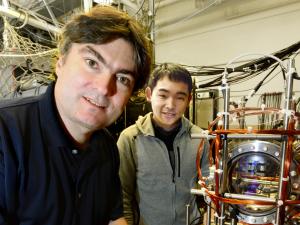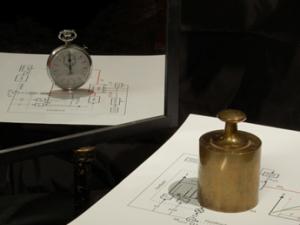

Research Bio
The basic premise of Holger Müller's work is that precision measurements of fundamental quantities can help to address the great challenges faced by physicists now – for example, how we can find and verify a theory beyond the standard model of particle physics that might eventually unify gravity and quantum mechanics. While the energy scale of such theories is typically beyond the reach of experiments, it is possible to probe for suppressed effects at attainable energies in experiments of outstanding precision. Precision measurements have played a central role in the paradigm shifts of twentieth-century physics, and he is convinced that this will continue to be the case.
His work uses methods from atomic, molecular, and optical physics. It is centered on advancing the experimental technology to push the sensitivity of experiments to new levels, and to perform precision measurements of fundamental quantities. I also work on the theory required for or underlying this work.
Holger Müller successfully applied for his first patent when he was 14. Later, he did his undergraduate thesis with Jürgen Mlynek at the University of Konstanz, Germany. He graduated from Humboldt-University, Berlin, with Achim Peters as advisor. Müller received a fellowship of the Alexander von Humboldt foundation and joined the group of Steven Chu in Stanford as a postdoc. In July 2008, he joined the physics faculty at U.C. Berkeley.
Research Expertise and Interest
atomic, molecular, optical physics, advanced electron microscopy, cryo-EM
In the News
With a New, Incredibly Precise Instrument, Berkeley Researchers Narrow Search For Dark Energy
How Many Lasers can You Fit into a Shoebox?
Bakar Fellow Holger Müller is redesigning an instrument known as an atom interferometer, capable of making extremely precise measurements of distance and gravity.
A rock is a clock: physicist uses matter to tell time
What is the simplest, most fundamental clock? UC Berkeley physicist Holger Müller and his colleagues have shown that a single atom is sufficient to measure time. Conversely, the frequency of matter can be used to define its mass.
Featured in the Media
"A team of Berkeley physicists has developed an unprecedentedly precise instrument designed to hunt for dark energy."



